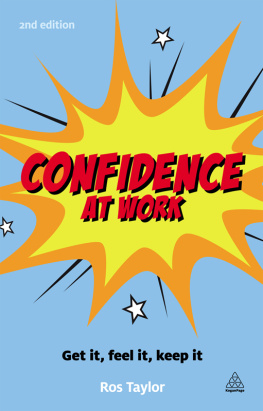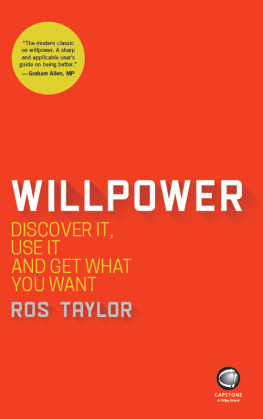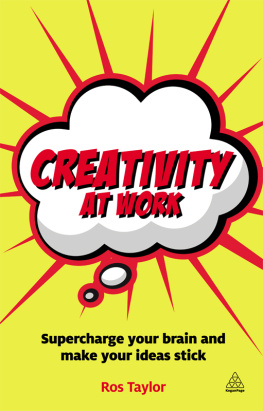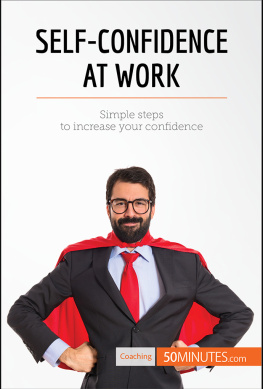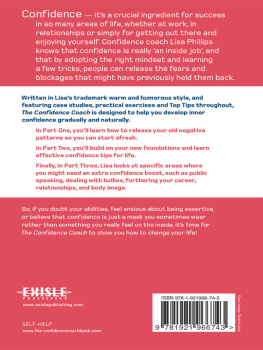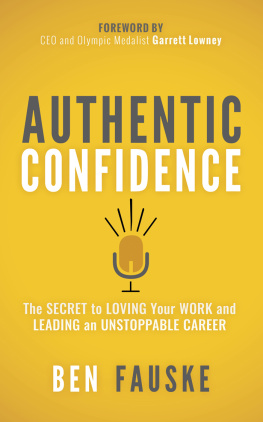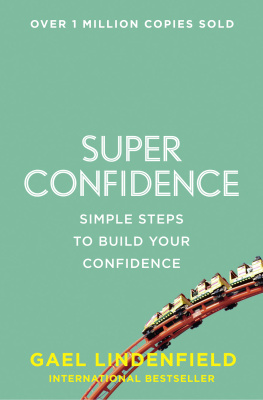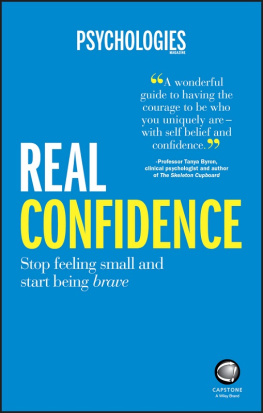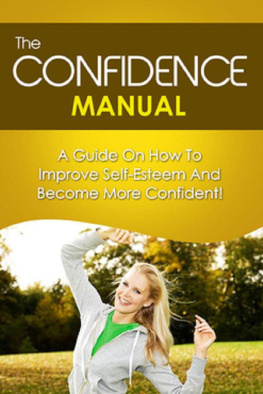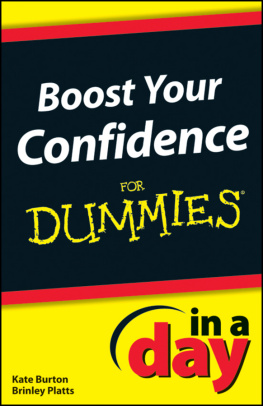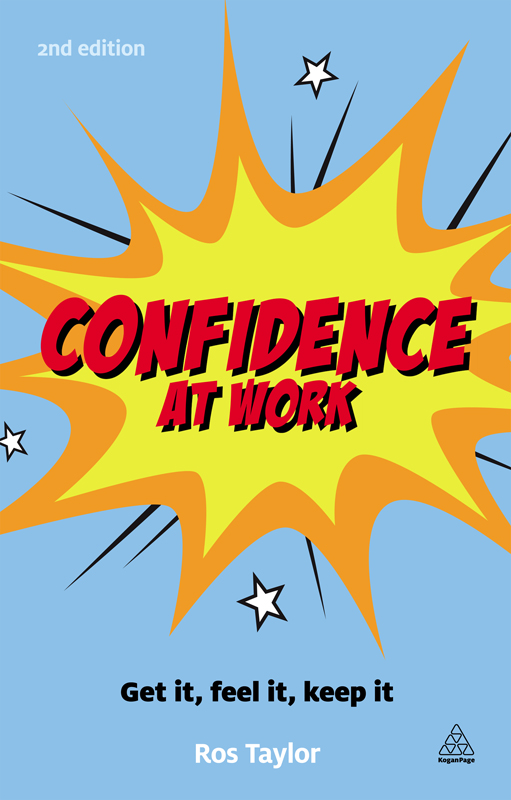Note on the Ebook Edition For an optimal reading experience, please view large
tables and figures in landscape mode. |
This ebook published in 2013 by
Kogan Page Limited
120 Pentonville Road
London N1 9JN
UK
www.koganpage.com
Ros Taylor, 2011, 2013
E-ISBN 9780749467760
To my husband John Young
Contents
F or me, the issue of (lack of) confidence in the workplace is one I come across on a regular basis. And one which is perhaps a more prominent issue for female professionals, particularly those working in male dominated sectors. That is certainly my experience from running the career and networking website Women in Technology, and its one of the core reasons we launched the business back in 2005.
Prior to running Women in Technology I spent several years working within the recruitment industry for financial services consultancy McGregor Boyall Associates. It was plain to see then that many women were missing out on a lot of opportunities to progress their careers. A lack of confidence in their abilities, which manifested itself in a reluctance to put themselves forward for positions for which they felt they were not experienced enough, was perhaps the most pertinent problem. However, without doubt the motherhood penalty and being put off by what was, and still is, a technology sector with a male dominated ethos were other key barriers.
Yet my experience working as an IT recruiter, and indeed my subsequent seven years as MD at Women in Technology, has taught me that a lack of confidence is not necessarily gender specific. While my own career may have been largely focussed on assisting females with this issue, confidence impacts us all. And the ability to progress and climb the career ladder can be largely dependent on this very issue, not only for employees but also for business owners.
Clearly, to enjoy a successful career you must have the requisite skills and knowledge to do the job in hand; however, years of experience and long lists of qualifications can only take you so far. In my career I have come across many highly skilled people whose careers have not really taken off or reached great heights. I truly believe that this has to do with the way they present themselves, rather than a lack of motivation or career prospects a justification that is often presented. You only have to look at some of the most prominent world figures to see this take politicians of today who often exude confidence and talk the talk. They are not only faced with huge challenges that present themselves on a daily basis, but also negative public perceptions yet their charisma and confidence have often got them to where they are and helped them to handle difficult situations.
In order to rise through a profession, knowledge is key, but self-belief and confidence are perhaps just as important, if not more so. It is imperative, therefore, that professionals and business leaders realize this and work towards presenting a more self-confident image of themselves and their workforces. And this issue is not confined to a few people or businesses; we are all guilty of it at some point and if companies are to see their employees fulfil their potential, the issue of confidence needs to be firmly on their agenda. After all, a company is nothing without its people, and it is these staff that, without confidence and self-belief, will not make the necessary positive impact on the brand and therefore its bottom line.
And it is perhaps this reason why Ros Taylors book is so useful for professionals the world over. On top of this, it is not just another self-help book it is written by a credible professional and offers straightforward, pragmatic and realistic advice. Ros has spent much of her career advising on the issue of confidence in the workplace including her work as a psychologist and visiting professor at Strathclyde Business School and has produced a book that is a clear and concise guide on this issue. It is a must-have for professionals, at any stage of their career.
The book helps you understand where your confidence comes from, what can impact it and how you can build upon it in your everyday working life. It uses theory to explore the issues and provides the reader with a guide on how to apply confidence to every aspect and activity of your job; whether thats influencing people, leading people, networking or changing your body language, to name just a few.
One area Ros covers is having a role model which is, in my opinion, a great way to learn and develop skills from an influential individual and something I have certainly applied to myself. Ros refers to several influencers perhaps the most recognisable is Bill Clinton, whose relaxation and charisma really stand out. The idea is to have a confidence role model and replicate their behaviour in your working life. I often advise members of the Women in Technology network to identify a role model it really does help, particularly if you feel a level of empathy towards them and can relate to their area of expertise. And these role models dont necessarily have to be famous leaders; they can be a colleague, a senior member of your team or simply someone you respect within your sector.
As Ros says Leaders need confidence. Great leaders inspire confidence in others. Confidence can be contagious. Happily, confidence can also be learned. The message is clear; read the book and you will see your confidence flourish and in turn, your career.
Maggie Berry, Women in Technology
http://37.128.131.97/~womenin/
Dear Reader,
Learning is about stories and to learn about confidence I would love to hear about yours.
I am interested in your journey towards confidence at work. Was there a turning point, a theory that provided understanding, an experience that helped you to believe in yourself, a course that provided you with the skills for confidence? Let me hear about it in order to share your experience with others. Stories inspire and provide hope for change and success.
You may also have some tips for confidence at work, some challenge that you have overcome and emerged a more confident person as a result.
Write to me on my blog at www.rostaylorgroup.com I will respond and so will others with their experiences.
I too am still on my journey towards confidence at work as life is always throwing up challenges. So we can gain more confidence together.
Happy reading and I hope to hear from you soon.
Best wishes,
Ros
T here is a lot of it about. Lack of confidence at work that is.
Since the launch of the first edition of Confidence at Work back in January 2010, I have travelled the length and breadth of the UK and USA discussing the book and exploring the issues that surround a lack of confidence at work. Many audiences were mixed but even more comprised only women. The topic has particular resonance with women working in the male- dominated sectors of, for example, finance, technology and construction.
I called these book launches Confidence Cocktails, a concept I came up with when I was trying to think of an analogy, a symbol for confidence during a meeting with my publisher Kogan Page so that we could create publicity post cards. It is a melange of ingredients which can be assembled in many different ways to produce very different effects just like us. The Confidence Cocktail was born.
On one occasion I was asked to deliver a Confidence Cocktail to the Women in Technology (WIT) group in Canary Wharf, London, sponsored by the Bank of America. I had a robust group of 150 attendees; however, Maggie Berry, the Chair of that organization, informed me that there was a waiting list of 450 women who wanted to attend but there were no spaces available as the lecture room was simply too small. Undeterred, many on the waiting list turned up anyway and sat, probably illegally, on steps and in aisles.

